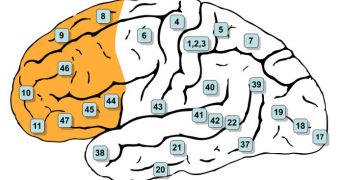According to the results of a new scientific study, it would appear that a large number of events can be observed in the human brain as accompanying the “Eureka!” or “aha” moments. When this happens, most people report a thought, an answer, or a realization simply popping up in their heads. But scientists say that the moment can also be clearly identified in brain scans, when neurons (nerve cells) in the prefrontal cortex of the brain get activated to levels higher than usual. The team behind the new work referred to the activity level of these cells as shifting gears, LiveScience reports.
“A lot of the theoretical basis of learning is based on this idea where there are small increments in improvement over many repetitions, and supposedly the neural basis of this is [that] there are incremental changes in the strength of the connections between the cells. But what we're saying is that you need to look at this differently, and there are situations where […] it's really an all or none shift in the [brain],” explains Jeremy Seamans, who is a study scientists based at the Brain Research Center. The institution is hosted and managed by the University of British Columbia (UBC), in Canada.
For the new investigation, the team used unsuspecting lab rats, whose brain physiology makes them a good proxy for researches of this sort. During experiments, the rodents were conditioned to learn a new task. Most of them exhibited an abrupt change in behavior as they figured out what they had to do in order to get a reward. The researchers say that this is the equivalent of the “Eureka!” moment humans experience. When this happened, they add, a group of neurons located in the prefrontal cortex became a lot more active than before the behavior change occurred. Additional details of the experimental setup were published in the May 13 issue of the esteemed scientific journal Neuron.
“If you took all of the animals and you averaged their behavior while they acquired the new rule, it would look like a gradual improvement, like they would make less and less errors over time […] and then finally they're 100 percent on the new rule. But if you look at individual animals, they're not like that. They're bad, and then all of a sudden over just a few trials, they get it, and then they're good,” Seamans adds. It would therefore appear that, at an individual level, the concept of a gradual “learning curve” does not really apply, neither in rats, nor in humans. The curve may, however, find applications in studying groups and crowds, researchers believe.

 14 DAY TRIAL //
14 DAY TRIAL //